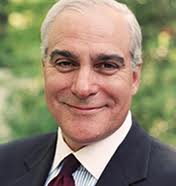 Building and maintaining a culture that supports diversity and inclusion is the role of today's leader. This includes recruiting, valuing and respecting people from different backgrounds, experiences and perspectives.
Building and maintaining a culture that supports diversity and inclusion is the role of today's leader. This includes recruiting, valuing and respecting people from different backgrounds, experiences and perspectives.
Diversity and inclusion was the focus of our most recent Credit Union Leadership Forum Edu-Leader learning event for senior leaders to increase organizational effectiveness. Insights and perspectives were provided by Angela Vallot and Mitchell Karp of VallotKarp Consulting as well as Kathleen Bohan, senior vice president of research at Univision Radio.
Rapidly changing demographics affect not only the credit union industry, but require the attention of leaders across industries to understand the dynamics of diversity and engagement throughout an organization's culture.
Diversity involves elements that differentiate groups and people from one another. It includes the broad range in approaches and perspectives arising from differences in culture, personal attributes, membership in a social group and other circumstances.
Inclusion differs from diversity. Inclusion entails being valued, respected and supported by leaders, which creates an environment that recognizes and appreciates the differences among people and the value these differing views bring. When a diverse workforce feels welcome and motivated, ideas are expressed more freely, resulting in greater collaboration and innovation.
Effective leaders make fewer assumptions about people based on race, gender, sexuality and nationality. Karp used the “Iceberg Model” to illustrate that only about 10% of the data related to an individual's uniqueness is readily seen. The other 90% includes things that are not clearly visible, including ethnicity, socio-economic status, religious beliefs, sexual orientation, work style and skill, professional values, political affiliation and educational background.
Inclinations often form the basis of judgments and decisions, including recruiting and promotion decisions. Awareness of inclinations allows leaders to form better judgments when “tip of the iceberg” factors are replaced with valuable, fact driven information.
In his book Blink, Malcolm Gladwell recounts a classic example. 30 years ago, most professional orchestras implemented “blind” auditions with musicians playing behind a screen, changing a long-standing tradition of conductors and judges viewing the auditioning musicians. Although this change occurred in part to stop conductors from favoring former students, the unexpected result was a fivefold increase in the number of women chosen for spots in prestigious orchestras.
Inclusion affects the work environment, the members/customers, the community and the bottom line. Everyone wants to be treated respectfully. When employees feel valued, they become engaged and feel greater job satisfaction. Employee satisfaction results in member/customer satisfaction and loyalty, which builds success.
Furthermore, the ability to recruit and retain top talent is linked to how employees experience the organization. A culture of inclusion leads to productivity, retention and loyalty. Furthermore, a diverse workforce brings wisdom and insights about the organization's members/customers, who are themselves increasingly diverse.
Leaders face challenges to diversity and inclusion. Often the most important one is insider/outsider dynamics within the organization.
Insiders, who are usually in the majority, often have a shared culture of norms, values and assumptions, as well as a shared history. Outsiders are a numerical minority and often are women, people of different race, ethnic or sexual orientation. Outsiders can be self-conscious, live in fear of making a mistake, be reluctant to offer suggestions or ideas and even have a sense that they must work harder to prove themselves. These behaviors diminish creativity, innovation and productivity.
Leaders can become aware of their natural pre-dispositions through self-examination. They can explore probing questions such as: Who are the people that I think are similar to me? Who is included and excluded? Who receives praise or criticism? Whose contributions are taken for granted? When do I listen? When do I shut people out?
With the help of insights gained through self-reflection, leaders can develop an action plan for themselves. They can contemplate how diversity and inclusion both add value to an organization to help it to better serve its changing demographics of members/customers, enable it to attract new members/customers and develop more innovative products.
They should be open to considering “what I am missing” in thinking about their colleagues and the work environment. They can pay attention to ways in which they include or exclude “others” and adjust accordingly. They can notice and expand attention to those that they might not know or might have overlooked – seeking out their input and gaining a new perspective on the business and member/client base.
The effective leader understands the role each person plays in acknowledging and valuing diversity and promoting a culture of inclusion. A culture that maximizes the effectiveness of each individual in the organization increases the success of the organization as a whole and its capacity for growth.
Stuart R. Levine is chairman/CEO of Stuart Levine & Associates. Contact (516) 465-0800 or stuartlevine.com.
© Touchpoint Markets, All Rights Reserved. Request academic re-use from www.copyright.com. All other uses, submit a request to [email protected]. For more inforrmation visit Asset & Logo Licensing.






